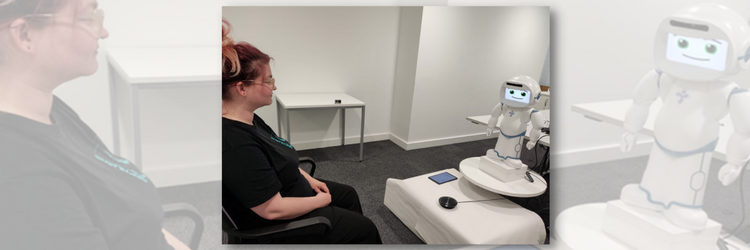Robots as mental well-being coaches in the workplace may be useful– but it depends on what the robot looks like. University of Cambridge researchers used two robot well-being coaches for their study; 26 employees participated in weekly robot-led well-being sessions for four weeks. The robots had identical voices, facial expressions, and scripts; however, the robots’ physical appearance affected how participants interacted.
Those interacting with a toy-like robot said they felt more connected with their ‘coach’ than when working with a humanoid-like robot. They found that their expectations for the humanoid robot found didn’t match reality, as the robot was not capable of having interactive conversations.
They are presenting their results at Stockholm’s ACM/IEEE International Conference on Human-Robot Interaction.
A lack of resources and personnel often limits implementing of well-being practices; robots could address the gap. The researchers collaborated with Cambridge Consultants to design and implement a workplace well-being program using robots. Over the course of four weeks, either the QTRobot (QT) or the Misty II robot (Misty) robots guided the participants through the exercises. QT is a child-like humanoid robot roughly 90cm tall, while Misty is a 36cm tall toy-like robot. Both robots have screen faces that can be programmed with different facial expressions. The robots had the same personality, the same facial expressions, and the same voice. The only difference between them was the physical robot form.
Participants who worked with the toy-like Misty robot reported a better connection with the robot than those who worked with the child-like QT robot. Participants also had a more positive perception of Misty overall. The Misty robot matched their expectations. Since QT is more humanoid, they expected it to behave like a human.
The team is now working to enhance the robot coaches’ responsiveness during coaching practices and interactions.

